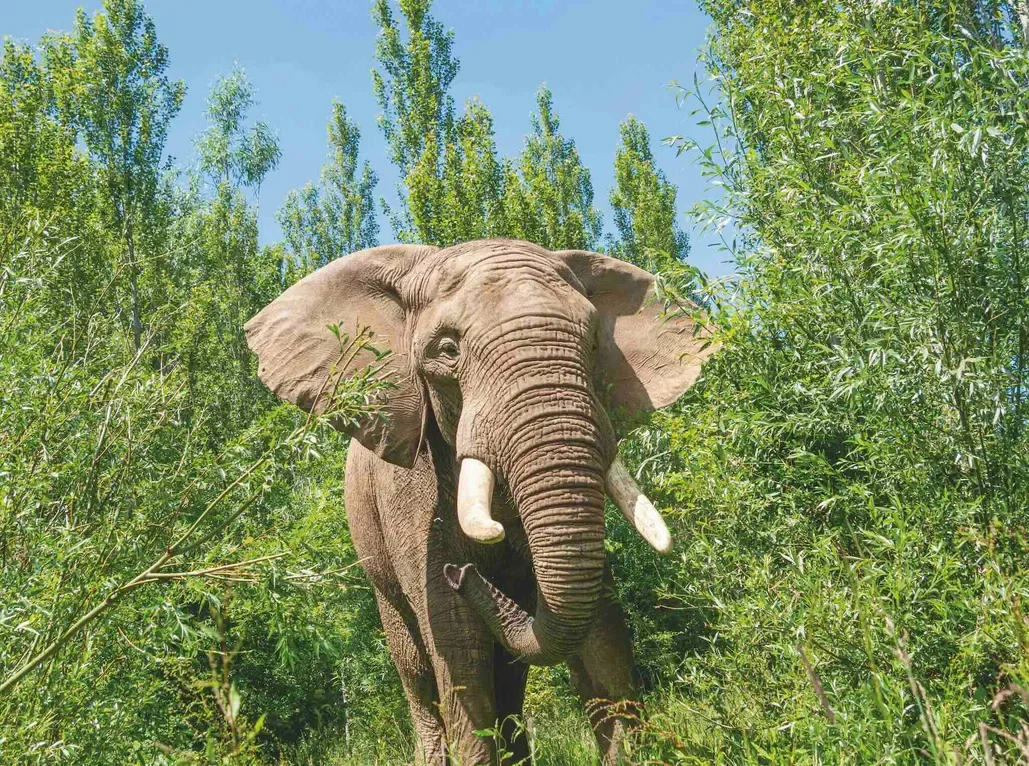
The Great Debate: Zoos and Their Role in Wildlife Conservation
In the heart of the ongoing conversations about wildlife conservation, a compelling debate arises: Can humans ethically justify the existence of zoos in our modern world? The scenarios at facilities like Noah’s Ark Zoo Farm, which houses Shaka the African savannah elephant, stir both admiration and controversy. As societies grapple with the complexities of animal captivity versus wild preservation, the importance of this topic cannot be overstated.
Shaka, a 33-year-old bull elephant, appears serene in his habitat. Noah's Ark CEO Larry Bush describes him as an "ambassador for his wild cousins." This statement encapsulates the essence of the zoo's function – a platform for education and awareness. Visitors can witness the grandeur of animals like Shaka up close, something that many might never experience in the wild. However, this raises a poignant question: Should animals, particularly those as socially complex as elephants, endure captivity for the sake of human enlightenment?
Proponents of zoos present three main arguments: raising awareness about wildlife threats, funding conservation initiatives, and providing species for potential reintroduction into their natural habitats. Research shows that zoo visits can enhance knowledge about endangered species among schoolchildren, fostering a lasting concern for biodiversity.

Nevertheless, skepticism arises, particularly from animal welfare advocates like Will Travers of the Born Free Foundation. He argues that for many, the zoo experience is more about entertainment than education, reducing meaningful learning to mere photo opportunities with exotic animals. This raises a crucial concern: Are our motivations for visiting zoos altruistic or merely self-serving?
As dynamic as the dialogue surrounding zoos is, the landscape is evolving. Institutions like the Bristol Zoo Project illustrate a shift towards integrating exhibits that educate visitors about native species and their historical contexts in the ecosystem. According to Justin Morris, chief executive of Bristol Zoo, these changes aim to reach a broader audience, recognizing that effective conservation efforts must involve everyone, not just the elite.
However, the reality remains stark – while zoos can offer hope through ark populations, very few animals will ever be released back into the wild. Success stories are often exceptions rather than the rule. Examples such as the Mauritius kestrel or the Iberian lynx stand out as remarkable achievements, yet they highlight the urgent need for genuine conservation efforts beyond the confines of a zoo.

Ultimately, as the debate continues, a fundamental truth emerges: the quest for ethical animal treatment must align with conservation goals. As we advocate for improved conditions for animals like Shaka, we must also challenge the very existence of captive wildlife exhibits. In this intricate balance between education and ethics, one must ask: Is keeping wild animals in captivity a necessary compromise for the greater good, or are we simply perpetuating a cycle of exploitation in the name of conservation?
As we ponder these questions, we invite you, dear readers, to share your thoughts. Do you believe that zoos can play a meaningful role in conservation or should we seek alternatives? The discussion is open – please leave your comments below.